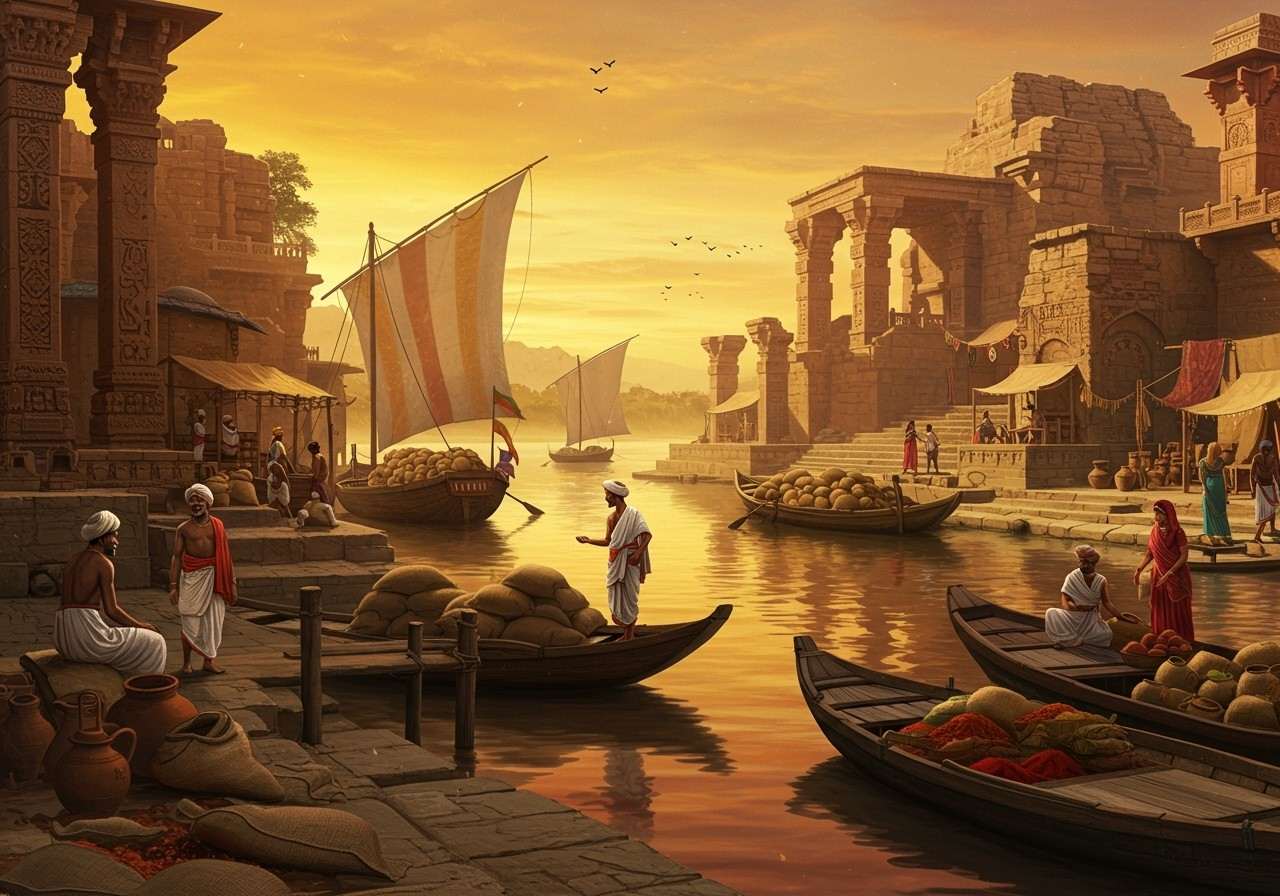
Come, let us take a journey back in time, not just by years, but by millennia. Picture a bustling port on the coast of Gujarat, where the air is thick with the scent of the sea and the chatter of traders from distant lands. This was Kuntasi, an ancient heart of commerce during the glorious Harappan civilization. Known to the local people as Bibi-no-Timbo, this site near Morbi offers us a breathtaking glimpse into India’s rich maritime history and the incredible ingenuity of our ancestors.

A Glimpse into a Thriving Past: The Story of Kuntasi
Long before recorded history, between 2200 and 1700 BCE, Kuntasi was a vital hub of activity. It wasn’t just a simple port; it was a meticulously planned settlement dedicated to manufacturing and trade. Thanks to the pioneering work of archaeologists like P. P. Pandya and Y. M. Chitalwala, we now know that ships laden with Indian goods sailed from Kuntasi to the Gulf countries, connecting our civilization with distant lands like Mesopotamia. It is believed that the Gulf of Kutch once reached right up to this port, making it a strategic gateway to the world before it was eventually abandoned as the waters receded.
Treasures from the Earth: What Archaeologists Found
The excavations at Kuntasi, the second Harappan port to be studied after Lothal, have revealed a story of a sophisticated and prosperous society. The discoveries here are nothing short of remarkable, painting a vivid picture of life from over four thousand years ago.
- A Fortified Hub of Industry: Kuntasi was no ordinary village. It was protected by a double-fortification wall, with a watchtower, a proper quay for docking ships, and large warehouses for storing goods. This level of planning shows how important this site was for the production and safe movement of valuable items.
- A Centre for Master Craftsmanship: The artisans of Kuntasi were masters of their craft. Archaeologists have found beautiful bichrome pottery (painted in cream and red), copper bangles, thousands of tiny steatite beads, and exquisite goods made from agate and carnelian. These weren’t just for local use; these high-quality items were exported, showcasing Harappan skill to the world.
- The Enigmatic Faience Seal: Perhaps one of the most fascinating finds is a unique seal. Unlike most Harappan seals made of steatite with bull figures, this one is crafted from faience (an early form of glass) and features rectangular figures. This rare artifact, similar to ones found only in Harappa itself, speaks volumes about Kuntasi’s special status.
The Cultural Echoes of Kuntasi Today
The spirit of Kuntasi did not disappear with the receding sea. Its legacy lives on in the vibrant culture of Gujarat. The ancient traditions of craftsmanship, be it in pottery or decorative arts, can still be seen today. This ancient trade in valuable goods also reminds us of the importance of authentic, pure materials in our own cultural practices.
In ancient times, trade involved items of great cultural and spiritual value. Today, at Poojn.in, we continue this tradition by bringing you authentic items for your spiritual journey. Whether you’re looking for beautifully crafted brass puja items that echo the metalwork of our ancestors, or traditional clay items similar to the pottery unearthed at Harappan sites, we ensure every product respects our rich heritage. Explore our collection of Pooja Samagri to find items that bring authenticity and sanctity to your rituals.
Answering Your Curiosities about Kuntasi
Many of us are curious about what makes Kuntasi so important. Its primary significance lies in its role as a specialized port town, offering a rare window into the Harappan civilization’s maritime trade and global connections. Unlike many other sites, Kuntasi was a bustling industrial centre where goods like pottery, beads, and precious stones like Lapis Lazuli were not just traded but also manufactured for export. The discovery of a landing platform, furnaces, and warehouses provides solid evidence of a sophisticated coastal trading town, enriching our understanding of Harappan society’s economic strength and organisational skills. Studying Kuntasi helps researchers piece together the grand puzzle of our ancient economy and cultural exchanges.
Preserving a Priceless Heritage
Sites like Kuntasi are a sacred trust, a gift from our past. It is our collective responsibility to protect and preserve this priceless heritage. Efforts by government bodies and cultural organisations are crucial in safeguarding these archaeological treasures for future generations. When we learn about and visit places like Kuntasi, we connect with our roots and appreciate the incredible journey of our civilization. It’s a journey through history that you can continue by exploring other magnificent sites, such as the ones detailed in our post on Sirpur, a journey through history and monuments.
Kuntasi is more than just ruins; it’s a testament to a time when India was a beacon of trade, culture, and innovation. It is a story written in stone and clay, waiting for us to listen and be inspired by the enduring spirit of our land.


